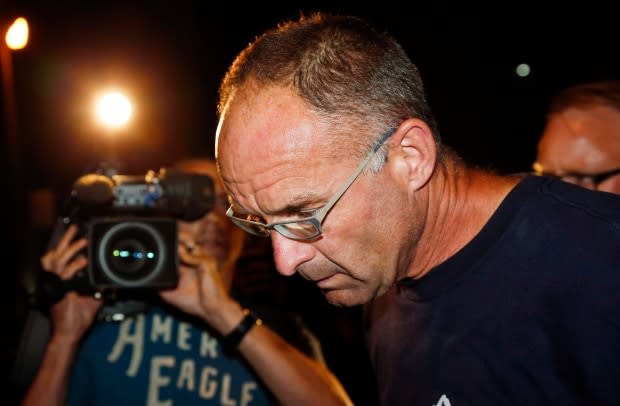No more 'perp' walks, double the cells as police open new $25M arrest processing centre in Spyhill
Calgary's six-decade-old arrest processing unit downtown will shut its doors this week as the city opens a new, $25-million Spyhill Services Centre that's full of improvements to protect arrestees' safety and dignity, police say.
Starting Wednesday, those arrested will be taken and processed at the new facility at 12500 85 St. N.W., which is about 20 kilometres north of the existing facility in the deep northwest near other in-custody facilities, including the Calgary Remand Centre, Calgary Correctional Centre and Calgary Young Offender Centre.
The Calgary Police Service's current arrest processing unit (APU), sandwiched between the now-closed central library and Bow Valley College, is 59 years old and has been in poor shape for more than a decade.
The downtown facility was built in 1961 when Calgary's population was about 240,000. At that time, it was part of the new police headquarters building.

Calgary police Chief Mark Neufeld says officers and staff have made the old APU work but it's time to move on.
"There is only so much you can do in a place designed six decades ago for a city five times smaller that we are now," said Neufeld.
"This building will allow us to continue processing people in our custody with compassion, dignity and respect for decades to come."
In 2013, the downtown APU sustained serious damage when flood waters hit the city.

When the current arrest processing unit shuts its doors on Wednesday, the old facility will be returned to the City of Calgary.
Construction began two years ago on the new 49,000-square-foot facility, which is on a three-acre (1.2-hectare) parcel of land being leased from the province.
Ian Savage, president of the Calgary Criminal Defence Lawyers Association, says he hopes police will provide bus tickets to people who are released from the much more remote Spyhill facility.
"Many of our poorest and most vulnerable citizens do end up under arrest for poverty and addiction related issues," he said.
According to police, about half of those brought in for processing after being charged are taken to another in-custody facility.
The others are asked to make their own arrangements for transportation — having a family member pick them up or booking a taxi.
But police say they will provide transportation to downtown Calgary for those who can't afford other options.
Savage also wants an invitation to tour the new facility.
"Questions do arise from time to time as to the treatment received by detainees under arrest, and seeing the whole process people will go through step by step will assist us protecting the rights of these vulnerable citizens."

The new building features an enclosed bay for loading and unloading arrestees.
That means when someone is charged with a high-profile crime, news photographers will no longer be able to take photos of the accused person.
So-called "perp walks" have been the subject of complaints in the past by the Calgary Defence Lawyers Association.
The association filed a complaint with CPS in 2014, when Douglas Garland was walked for more than a minute from a parked police car to the APU, giving media outlets plenty of time to take photos and video of the now-convicted triple murderer.

The Spyhill building has double the number of holding cells as the current facility and the size of each cell has also been increased.
Suicide mitigation measures were also taken into consideration and incorporated into the design of the holding cells.
There are separate entrances for adults and youths to protect minors charged with crimes, and a new medical treatment area as well.
Police say the building has dimmable lights in the cells, is easier to clean and has better noise control "to support a higher standard of care for arrestees."
Accused people will have access to rooms where they can consult with a lawyer ahead of their first appearances before justices of the peace, which also take place in the new facility.

